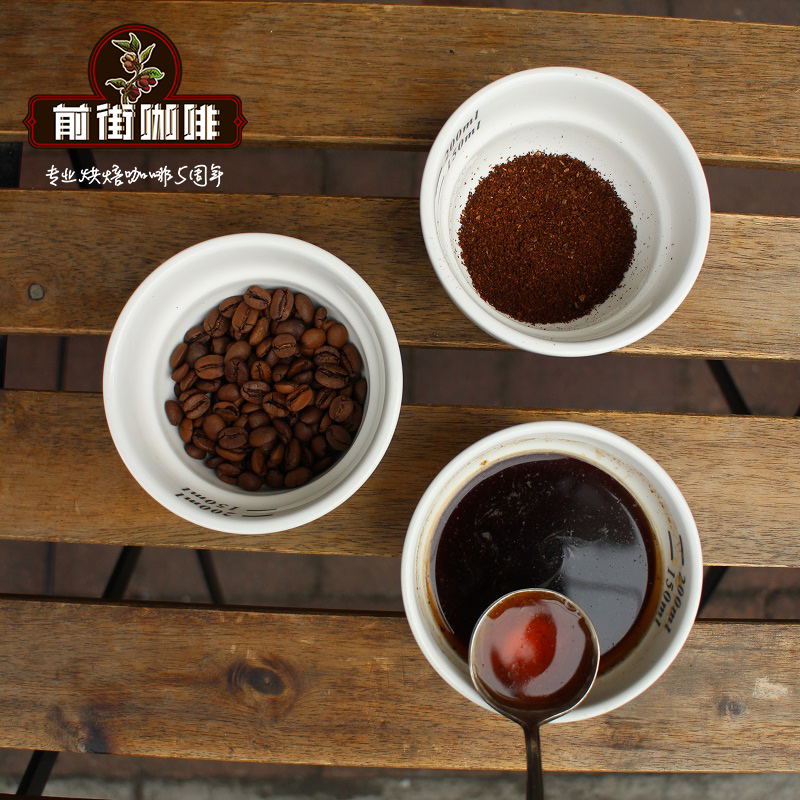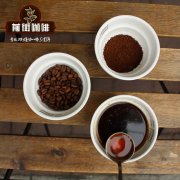How to cultivate the senses of coffee, how to taste the different flavors of coffee and can be described.

I believe that many enthusiasts will encounter such a situation. I buy a bag of beans with citrus and peach flavor, but I can't taste them, so I suspect it's the beans, the cooking, or the senses.
The flavor of coffee bothers many students. How can I not drink so many flavors on the flavor table? ~ after all, not everyone has professional feelings, or I drink not peach flavor but plum flavor. The reason why there is such a difference is the difference in life, culture, diet, regions and different descriptions of the same cup of coffee, so the most important thing in coffee tasting is communication. Tell me how you feel about this bean. Different descriptions of experiences must be different, but this kind of communication can bring a lot of fun, can't it?
To give a simple example of the flavor wheel of SCA coffee, the chocolate aroma reflected in Mena's reaction, such as milk chocolate, dark chocolate and white chocolate, which enthusiast can really tell the difference between these three chocolate flavors without special training or high level of taste (now even chocolate has a flavor wheel, )
To understand coffee, you need three conditions:
First: have you ever experienced a similar sense of taste and smell? If you haven't eaten peaches, of course you can't taste peaches.
The second: it is recommended that you wait until the coffee is completely cold before tasting it, because usually the fruit tonality of the coffee will not be recognized until it is cold, and the coffee flavor will unfold as the temperature drops.
Third: the intensity of coffee can also affect the tonality of a cup of coffee. If it is a lightly roasted coffee with floral flavors, it is recommended to dilute it and open the taste spectrum to find the flavor more easily (this is a good explanation for why the ratio of powder to water measured in the cup is 1buzz 18.18).
For example, to taste a good cup of coffee, steps:
Drink coffee with a small sip, drink slowly, or even gargle and gently stir the coffee liquid in your mouth.
Each mouthful will spread out with the change of temperature, and the roots of the first two tongues will be bitter. When the coffee temperature is cold, it will slowly change from bitter to sour, subtle citrus acid.
In the middle of the drink, the coffee changes from sour to sweet, from bitter to sweet, begins to taste sweet, has a sweet taste on the tongue, and finally has a sweet aftertaste to caramel, staying between the mouth and nose, tasting the aftertaste of coffee through the sense of smell behind the nose.
Do not rush to wash the cup after drinking, to smell the sweetness of the bottom of the cup.
Smell, taste and aftertaste teach you how to taste coffee.
The first step: smell the incense
Before the entrance, use your nose to appreciate the aroma of the coffee. Here you can not hesitate to borrow wine tasting words, first smell your coffee to see if it has aroma, such as flower, fruit or wine, whether there is abnormal rotten soil, mildew, volatile sour or spicy taste, these are the taste produced by poor quality or improper preservation of coffee beans. If it is a healthy coffee, then in the aroma can give you a lot of enjoyment. You can not hesitate to use the wine tasting system to evaluate a coffee, looking for fruit, flower, plant, baking and spice aromas. As the heat of coffee helps spread the aroma, you can easily capture the rich and complex aroma of coffee. Close to the mouth and nose, you will feel the dry aroma of different coffees from different coffee producing areas. For example, in Latin American coffee, you will smell something similar to nuts and dark chocolate, while coffee in Africa has more floral and fruit flavors. Close your eyes and smell its wet fragrance slowly.
Step 2: taste the flavor
When coffee is in your mouth, you can feel its flavor. In this respect, many enthusiasts, especially those who are just beginning to come into contact with coffee tasting, always think that coffee doesn't smell good. It is true that the sensory discrimination of coffee liquid in the mouth requires a certain amount of exercise, but over time, the flavor of the coffee can be detected. Good coffee is tasteless, pure and transparent. Cleanliness refers to the first to the last taste of coffee, without unpleasant miscellaneous taste and taste.
Mellowness is what we usually call boby, which refers to the round, mellow and strong taste of the coffee liquid. The difference between a cup of water and a cup of coffee is that water is tasteless and not sticky, while espresso is rich in oil and has a good mellow thickness. A cup of coffee with a good mellow thickness will make the aroma stay in the mouth longer and the finish longer.
Why is it sweet?
In fact, there has been a big misunderstanding for a long time. People who like black coffee do not mean that they like bitter taste, and bitterness is not the main flavor of normal black coffee. If the coffee berries are fully ripe, roasted and maintained with good freshness, the coffee itself will have a certain sweet taste, especially the aroma of caramel, honey and even sucrose. At the same time, many kinds of coffee itself have a good round texture. These admirable exquisite features can be drowned out with a small spoonful of sugar and milk. Of course, if it's just mediocre quality, or coffee that has been stored for too long, you will simply have a problem with yourself without milk and sugar.
How can it be salty?
Many people can drink the ups and downs of coffee, but there is another flavor "salty" that is often overlooked. These four flavors influence and restrain each other, while Xianxian is good at hiding under the cover of the other three flavors. The salty taste of coffee mainly comes from water-soluble minerals. For example, potassium oxide, sodium oxide and so on, as well as the growing environment, baking degree, freshness, treatment (such as the Indian monsoon) and cooking methods of coffee beans will affect the degree of saltiness. There is also the concentration or the acidity and basicity of the water, which will make a cup of coffee salty.
Why does it taste sour?
For those who often drink individual coffee, when it comes to sour coffee, most of them will think of Yejia Xuefei, which is indeed the representative of acidic coffee. Beginners who have not come into contact with individual coffee may wonder why the coffee is sour. If the coffee is sour, is it a bad coffee that has expired? In fact, this acid is not the other acid, coffee contains hundreds of acidic compounds. Coffee is the seed of fruit, of course, there is a certain amount of acid. Like citric acid and malic acid, citric acid is an important organic acid. Citric acid reaches its peak in shallow baking and is constantly decomposed and destroyed in the later stage of baking. Domestic bakers usually bake Yega, Rosa and Kenya, so it tastes sour. The acidity of high-quality coffee has a unique aroma, giving the coffee soul; on the contrary, the acid of cheap coffee lacks aroma and even has a strange smell, so the roaster naturally has to remove the acidity. The right acid can increase the activity, brightness and fruit flavor of coffee.
Where's the bitterness?
Gently take a sip, if there is a bitter taste, it will affect the level of the whole cup of coffee, negative astringency will expose defects in the quality of the coffee. But if bitterness can return to sweetness, astringency can give birth to fluid, high-quality bitterness is sometimes a symbol of the quality of coffee.
Important Notice :
前街咖啡 FrontStreet Coffee has moved to new addredd:
FrontStreet Coffee Address: 315,Donghua East Road,GuangZhou
Tel:020 38364473
- Prev

The Development History of Macchiato | what's the difference between American Macchiato and Italian Macchiato?
Thanks to Americans' inventions of traditional Italian coffee culture, it is now difficult for us to read the espresso-based drinks list in coffee shops, and it is even more difficult to tell which coffees are made with water and which with syrup. Macchiato is one of the most pitiful victims. Many people can tell what an Italian concentrate is and which one is a cappuccino, but it's hard to tell what a Ma is.
- Next

Can boutique coffee capsules make delicious espresso? how to use coffee capsules?
For coffee consumers, capsule coffee is in a sense a compromise between convenience and quality. However, as they become more and more popular, boutique coffee has gradually joined the camp of capsule coffee. So, how good can coffee capsules do? Can we break people's inertia of thinking? And why are they becoming more and more popular? This article will find out. 01. What?
Related
- Beginners will see the "Coffee pull flower" guide!
- What is the difference between ice blog purified milk and ordinary milk coffee?
- Why is the Philippines the largest producer of crops in Liberia?
- For coffee extraction, should the fine powder be retained?
- How does extracted espresso fill pressed powder? How much strength does it take to press the powder?
- How to make jasmine cold extract coffee? Is the jasmine + latte good?
- Will this little toy really make the coffee taste better? How does Lily Drip affect coffee extraction?
- Will the action of slapping the filter cup also affect coffee extraction?
- What's the difference between powder-to-water ratio and powder-to-liquid ratio?
- What is the Ethiopian local species? What does it have to do with Heirloom native species?

